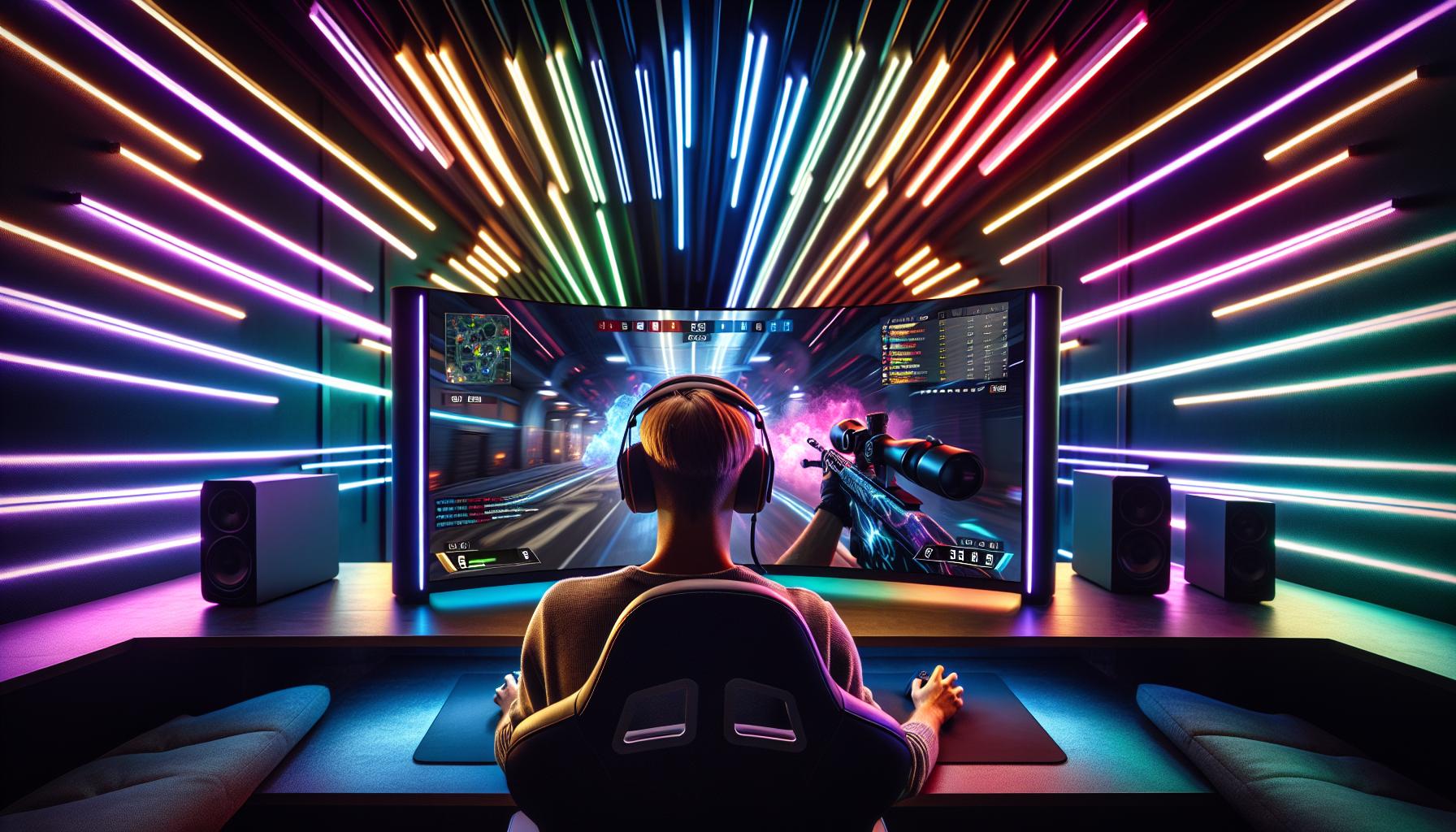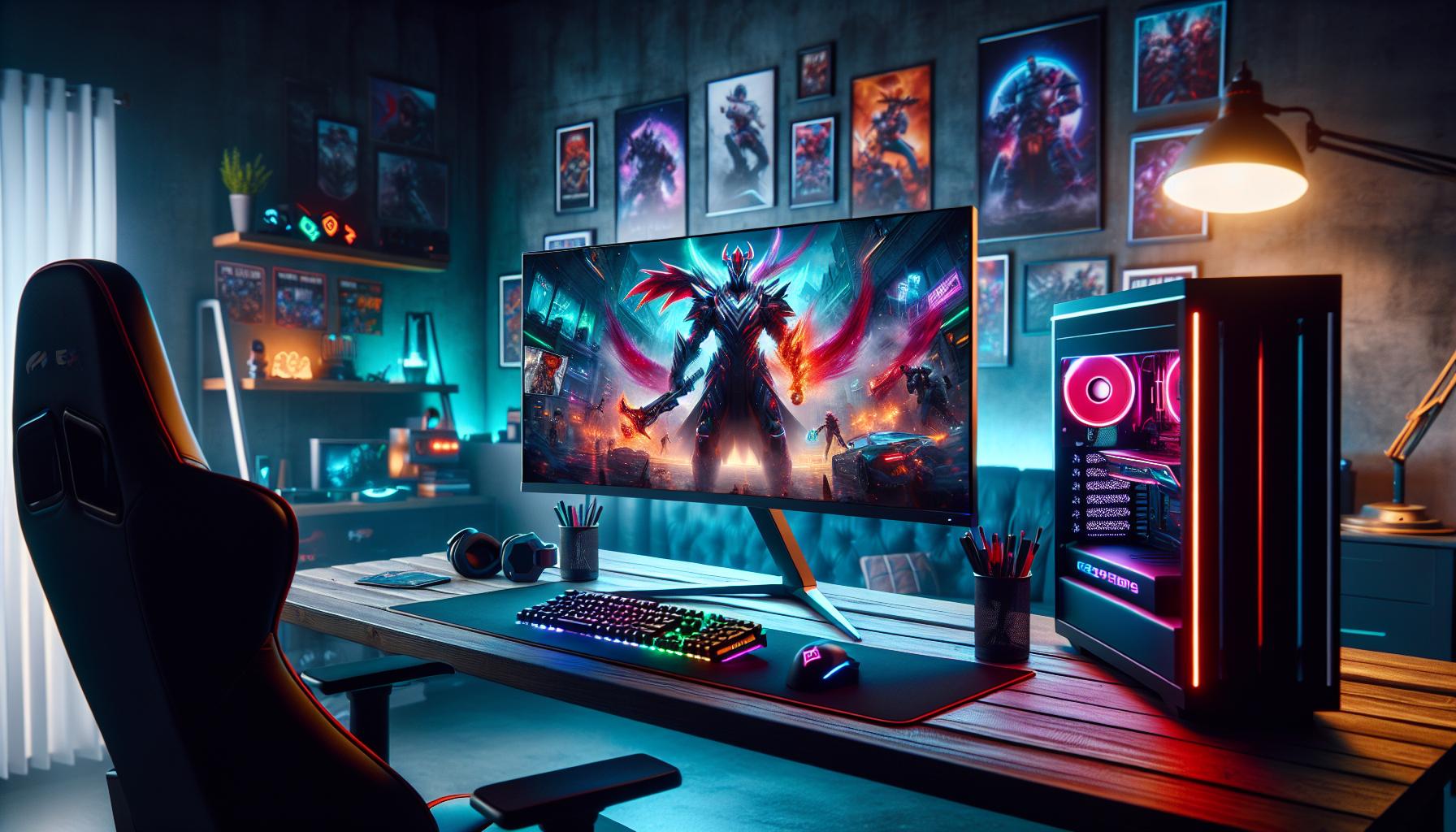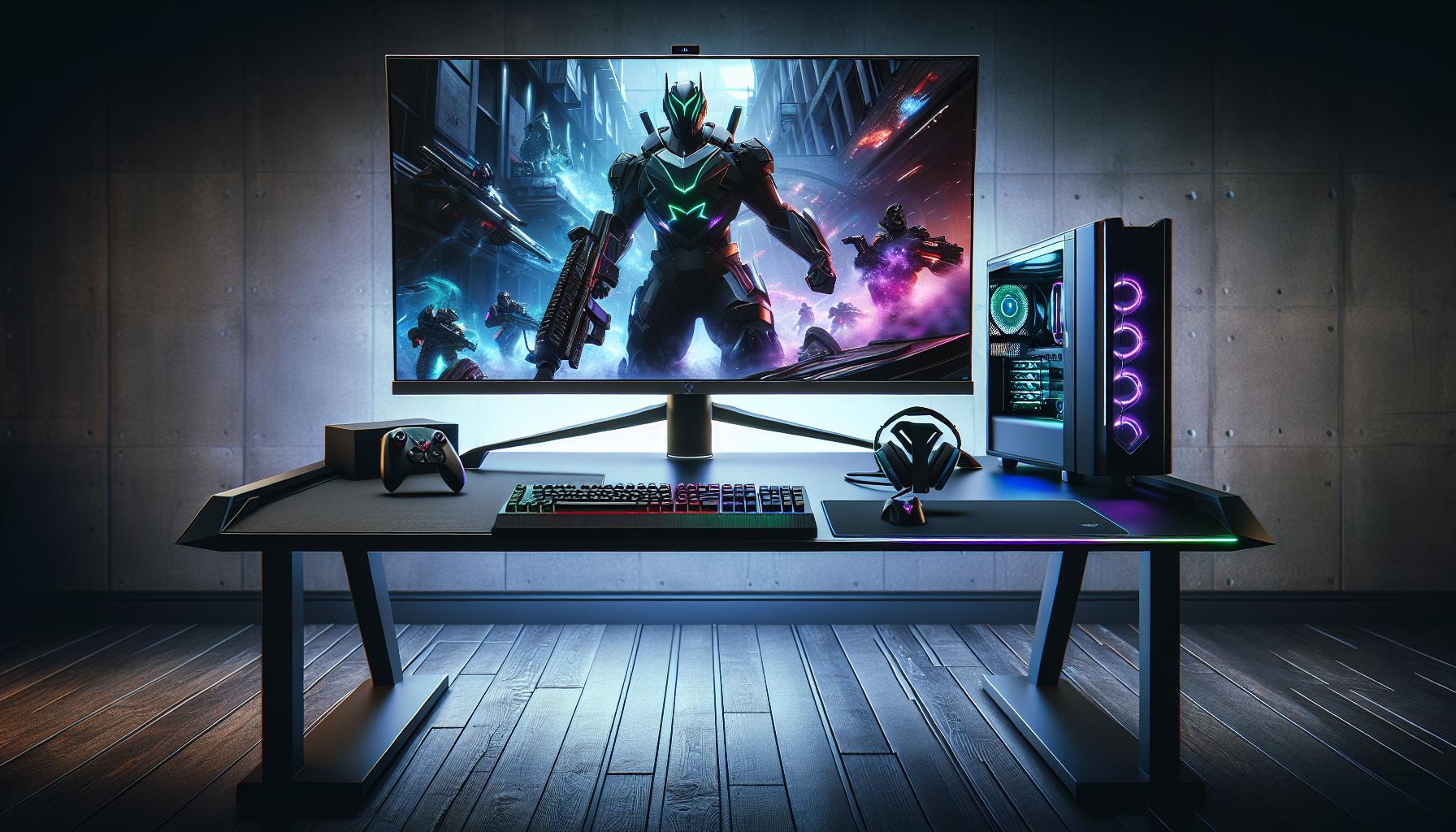In the fast-paced world of esports, having the right gear can make all the difference. Among the most crucial components is the esports monitor, designed to enhance gameplay and provide a competitive edge. These monitors offer features tailored specifically for gamers, including high refresh rates, low response times, and vibrant color accuracy, ensuring every frame counts in intense matches.
As esports continues to grow in popularity, players are increasingly investing in specialized equipment to elevate their performance. An esports monitor isn’t just a luxury; it’s a necessity for serious competitors. With a wide range of options available, understanding what to look for can help gamers choose the perfect monitor to match their style and needs.
Key Takeaways
- Essential Equipment: An esports monitor is crucial for competitive gaming, providing features that enhance performance and gameplay.
- Key Features: Look for high refresh rates (144 Hz or more), low response times (1 ms or better), and high resolutions (1440p or 4K) for optimal gaming experiences.
- Types of Monitors: Understand the differences between flat and curved monitors to choose one that fits your gaming style and preferences.
- Budget Options: Several budget-friendly esports monitors provide excellent performance without breaking the bank, with features suitable for fast-paced gaming.
- High-End Choices: Elite gamers can benefit from high-end monitors with ultra-high refresh rates (over 240 Hz) and advanced adaptive sync technologies for a competitive edge.
- Impact on Performance: Monitors with low input lag and high visual quality greatly enhance gaming performance, making them a vital investment for serious players.
Esports Monitors
Esports monitors play a crucial role in the competitive gaming environment. These specialized displays offer features tailored to enhance performance and provide gamers with a significant advantage.
Importance In Competitive Gaming
Importance lies in the monitor’s ability to deliver real-time performance feedback. High refresh rates, typically 144 Hz or more, minimize motion blur and make fast-paced action seamless. Low response times, ideally under 5 milliseconds, prevent ghosting, allowing players to react swiftly to in-game events. Additionally, a high color accuracy ensures players can discern details in darker scenes, enhancing strategic decision-making. Competitive gamers regularly recognize that investing in quality monitors contributes directly to improved gameplay outcomes.
Key Features To Consider
Key features include:
- Refresh Rate: A higher refresh rate, such as 240 Hz, allows smoother transitions in gameplay.
- Response Time: A lower response time, ideally 1 ms, reduces lag and delivers sharper visuals.
- Resolution: Higher resolutions, like 1440p or 4K, offer improved detail and clarity.
- Panel Type: Different panel types—TN, IPS, and VA—affect color reproduction and viewing angles.
- Adaptive Sync Technology: Technologies such as G-Sync or FreeSync minimize screen tearing and ensure smoother performance.
- Ergonomic Design: Adjustable stands and VESA compatibility enhance comfort during long gaming sessions.
Understanding these features aids players in selecting monitors that align with their gaming styles and preferences.
Types Of Esports Monitors

Esports monitors come in various types, each offering unique advantages tailored to different gaming experiences. Understanding these types helps players select the ideal monitor for their needs.
Flat Vs. Curved Monitors
Flat monitors provide a traditional viewing experience suitable for most competitive gaming setups. They tend to offer consistent color accuracy and uniform brightness across the screen. Curved monitors, on the other hand, create an immersive field of view by wrapping the display around the viewer. This curvature enhances depth perception and minimizes distortion, improving the overall gaming experience. The choice between flat and curved largely depends on personal preference and the type of games played.
Refresh Rates And Response Times
Refresh rates and response times are critical specifications for esports monitors. Refresh rates, measured in hertz (Hz), indicate how many times a monitor updates the image per second. Monitors with refresh rates of 144 Hz or higher provide smoother gameplay, especially in fast-paced games. Response times, measured in milliseconds (ms), reflect how quickly a pixel can change from one color to another. Monitors with response times below 5 ms minimize ghosting and motion blur, offering clearer visuals during intense gaming sessions. Selecting monitors with high refresh rates and low response times greatly enhances performance and reaction times in competitive environments.
Top Esports Monitors In 2023

In 2023, various esports monitors cater to different budgets and performance needs, ensuring gamers have access to displays that enhance their competitive edge. This section highlights both budget-friendly and high-end models available this year.
Budget-Friendly Options
Several budget-friendly esports monitors deliver impressive performance without breaking the bank. Features often include:
- Refresh Rate: Monitors with refresh rates starting at 144 Hz offer smooth gameplay, crucial for fast-paced titles.
- Response Time: Options typically have response times of 1 to 5 ms, reducing ghosting and motion blur.
- Resolution: Common resolutions like Full HD (1920 x 1080) allow gamers to experience clear visuals.
- Panel Type: TN panels are prevalent in this range, providing faster response times and competitive pricing.
- Adaptive Sync Technology: Many models include AMD FreeSync or NVIDIA G-Sync compatibility, preventing screen tearing and stuttering.
Some notable budget-friendly esports monitors include:
| Model | Refresh Rate | Response Time | Resolution | Price Range (USD) |
|---|---|---|---|---|
| AOC 24G2 | 144 Hz | 1 ms | 1920 x 1080 | $200 – $250 |
| ASUS VG248QG | 165 Hz | 0.5 ms | 1920 x 1080 | $250 – $300 |
| ViewSonic XG2405 | 144 Hz | 1 ms | 1920 x 1080 | $200 – $240 |
High-End Models
High-end esports monitors provide cutting-edge features for elite gamers seeking top performance. Key specifications include:
- Refresh Rate: Models often exceed 240 Hz, offering ultra-smooth visuals for competitive gaming.
- Response Time: Many feature response times as low as 0.5 ms, enhancing reaction speed.
- Resolution: Higher resolutions like QHD (2560 x 1440) or 4K (3840 x 2160) improve visual clarity and detail during gameplay.
- Panel Type: IPS panels provide superior color accuracy and viewing angles, enriching the gaming experience.
- Advanced Adaptive Sync Technology: Support for NVIDIA G-Sync Ultimate or AMD FreeSync Premium Pro eliminates tearing and ghosting, ensuring seamless visuals.
Examples of high-end esports monitors include:
| Model | Refresh Rate | Response Time | Resolution | Price Range (USD) |
|---|---|---|---|---|
| Dell Alienware AW2521H | 360 Hz | 1 ms | 2560 x 1440 | $900 – $1100 |
| ASUS ROG Swift PG259QN | 360 Hz | 0.5 ms | 1920 x 1080 | $800 – $1000 |
| Samsung Odyssey G7 | 240 Hz | 1 ms | 2560 x 1440 | $600 – $700 |
These monitors cater to serious gamers, facilitating enhanced performance and an engaging competitive experience.
Performance And User Experience

Esports monitors significantly improve both performance and user experience for gamers. With their advanced features, these displays create an optimal environment for competitive gaming.
Visual Quality
Visual quality plays a pivotal role in esports performance. High refresh rates and low response times enhance clarity during fast-paced gameplay. Monitors boasting at least 144 Hz refresh rates reduce motion blur, facilitating smooth visuals that are crucial for competitive scenarios. Additionally, vibrant color accuracy allows gamers to pick out subtle details in shadows and highlights, providing an advantage in identifying opponents or crucial game elements. Popular resolutions, including Full HD (1920 x 1080), QHD (2560 x 1440), and 4K (3840 x 2160), offer varied visual experiences tailored to different gaming styles and preferences.
Input Lag And Competitive Edge
Input lag directly impacts a gamer’s competitive edge. Monitors designed for esports typically feature input lag under 5 milliseconds, ensuring instantaneous feedback during gameplay. Lower input lag translates to faster response times, allowing players to execute actions without noticeable delay. This characteristic is essential for maintaining a fluid gaming experience, where split-second decisions can determine the outcome of a match. A monitor with minimal input lag enhances overall performance, making it a vital consideration for serious gamers aiming to gain an upper hand in competitive environments.
Choosing the Right Esports Monitor Can Make a Significant Difference
Choosing the right esports monitor can make a significant difference in a player’s performance and overall gaming experience. With advancements in technology offering a range of features tailored for competitive gaming, players can find monitors that suit their specific needs and preferences.
Whether opting for a budget-friendly model or a high-end display, the benefits of high refresh rates and low response times cannot be overstated. These features not only enhance clarity during fast-paced gameplay but also provide a competitive edge in crucial moments.
Investing in a quality esports monitor is a step toward achieving better performance and enjoying the immersive world of competitive gaming.
